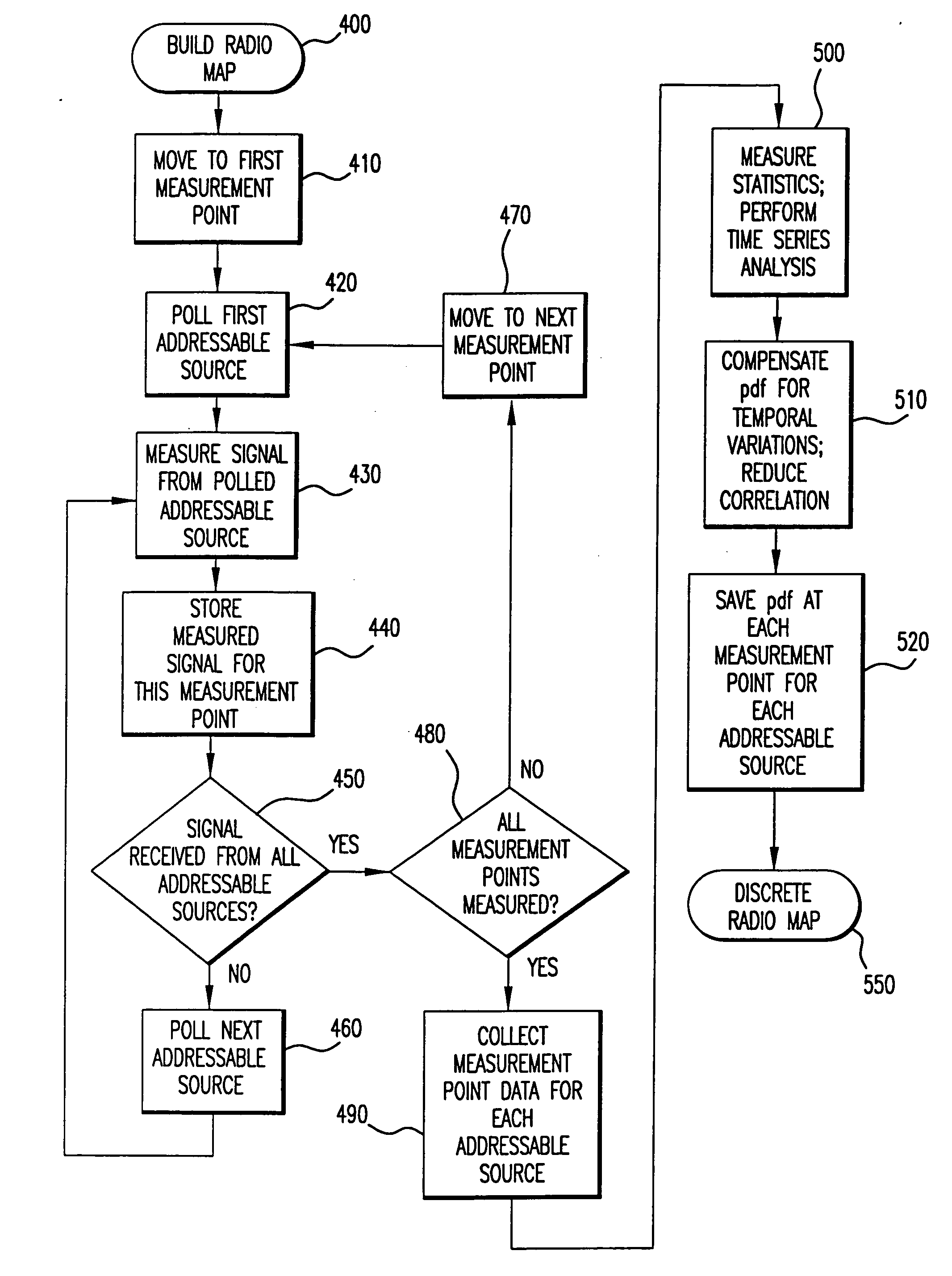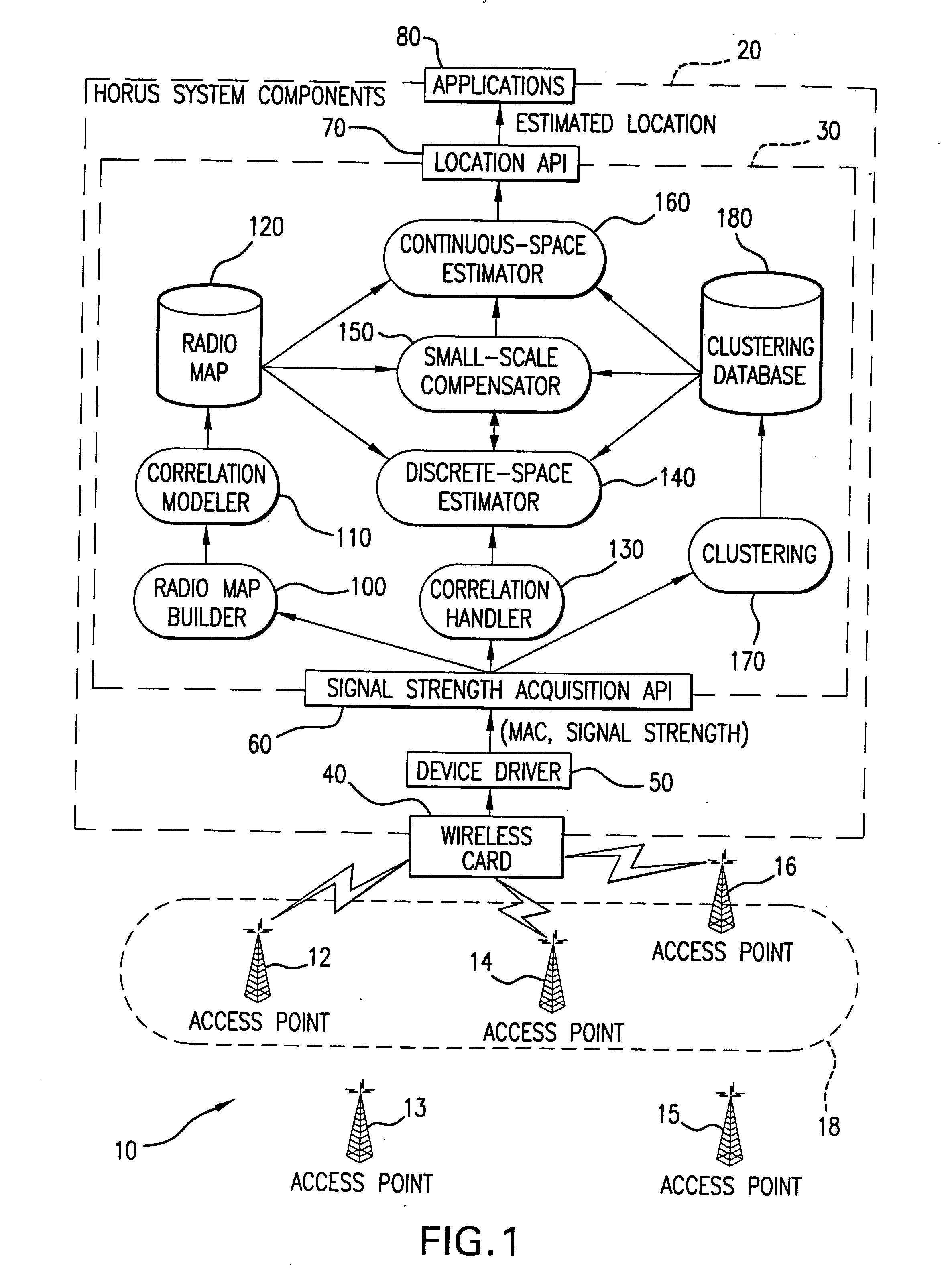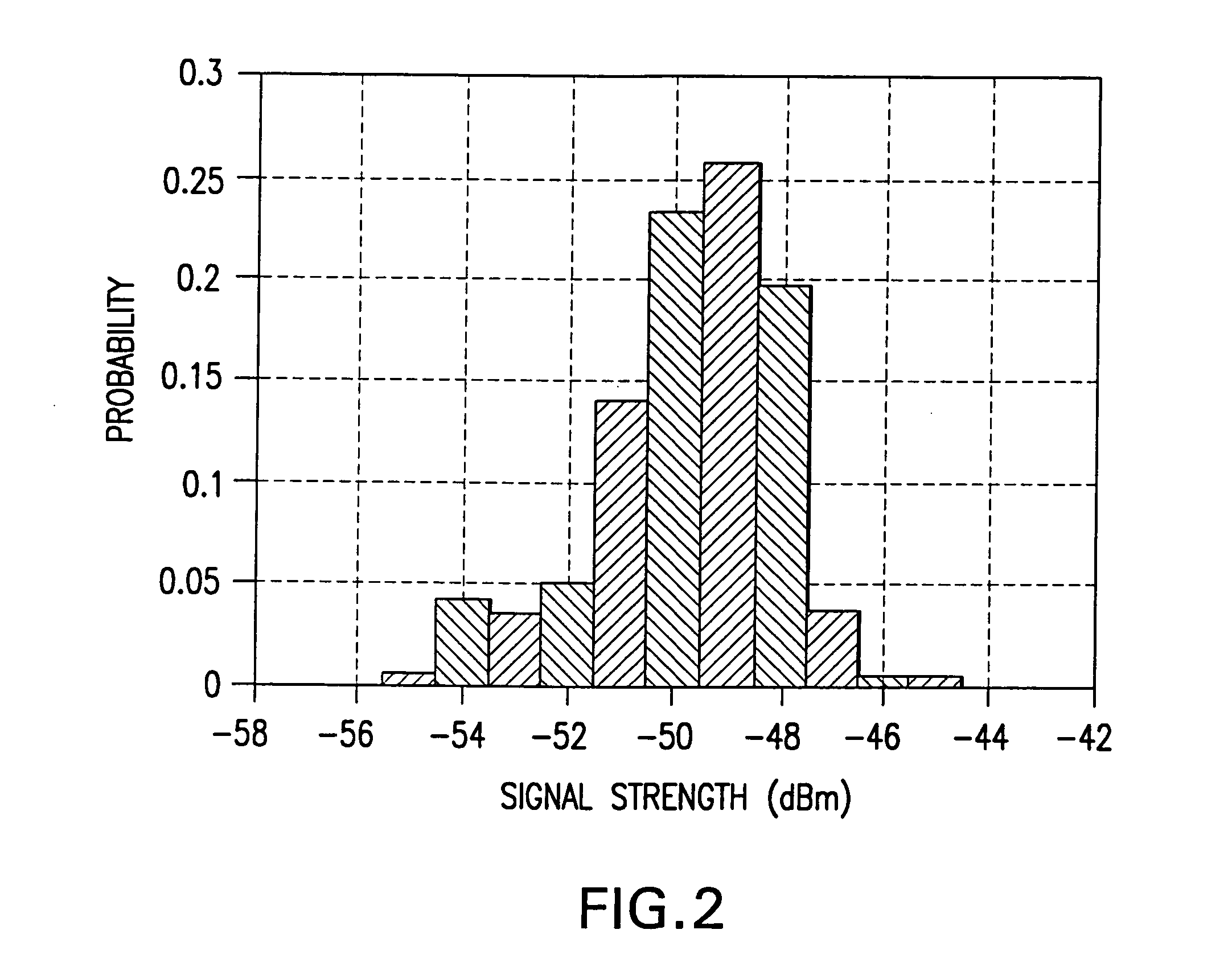Method and system for determining user location in a wireless communication network
a wireless communication network and user technology, applied in the field of user location determination, can solve the problems of inaccurate estimation of the time of arrival or angle of arrival, inability to use a gps system indoors, and inability to see the gps satellite, so as to maximize the probability, accurate determination of the user location, and the effect of greater accuracy
- Summary
- Abstract
- Description
- Claims
- Application Information
AI Technical Summary
Benefits of technology
Problems solved by technology
Method used
Image
Examples
Embodiment Construction
[0027] Referring to FIG. 1, system components of the present invention, designated “Horus” by the inventors thereof, are shown as implemented in a wireless communication network specified by the IEEE Standard 802.11. The 802.11 wireless network has all of the elements to implement the invention and is used herein to exemplify the invention without limiting the scope thereof. A wireless local area network (WLAN) implemented in accordance with IEEE 802.11 Standard, generally indicated at 10, consists of a plurality of access points 12-16 and a computing device 20. Although WLAN 10 is shown in FIG. 1 with only five access points and one computing device, a typical implementation includes many more of both access points and computing devices. Briefly stated, the present invention acquires an indication of the signal strength of a set of access points 18 and, via a previously constructed radio map, as will be fully described below, locates the receiving computing device 20 as being at a ...
PUM
 Login to View More
Login to View More Abstract
Description
Claims
Application Information
 Login to View More
Login to View More - R&D
- Intellectual Property
- Life Sciences
- Materials
- Tech Scout
- Unparalleled Data Quality
- Higher Quality Content
- 60% Fewer Hallucinations
Browse by: Latest US Patents, China's latest patents, Technical Efficacy Thesaurus, Application Domain, Technology Topic, Popular Technical Reports.
© 2025 PatSnap. All rights reserved.Legal|Privacy policy|Modern Slavery Act Transparency Statement|Sitemap|About US| Contact US: help@patsnap.com



